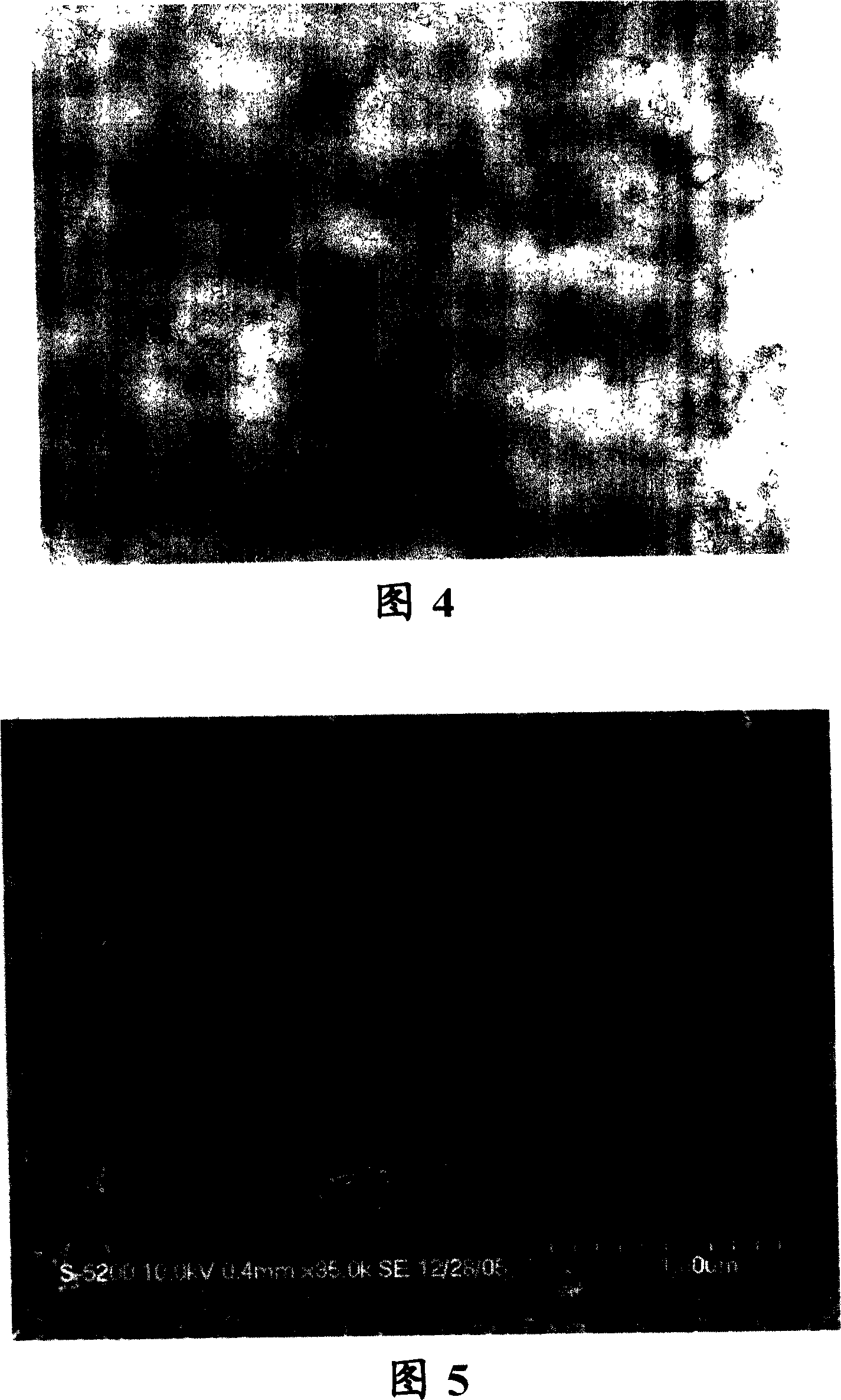Ultra-clean antistatic resin composition, preparing method thereof, product containing the same and application thereof
A resin composition, anti-static technology, applied in chemical instruments and methods, electrical components, other chemical processes, etc., can solve the problem of uneven dispersion of conductive additives, and achieve the effect of not easy to fall off and good anti-static performance
- Summary
- Abstract
- Description
- Claims
- Application Information
AI Technical Summary
Problems solved by technology
Method used
Image
Examples
Embodiment 1
[0056] Plastic substrate PEI 75g, carbon nanotubes 19.5g, silane coupling agent 0.5g, dispersant acrylic acid copolymer 4g, antioxidant tris(2,4-di-tert-butylphenyl ester 1g.
[0057] The above materials are passed through an ordinary twin-screw granulator, and nano-scale carbon tubes / nano-scale carbon black are mixed with plastic substrates and additives to produce ultra-clean anti-static materials. A standard sample was prepared by injection molding using the granular material of Example 1 for performance testing. The transmission electron microscope (TEM) image of the sample of Example 1 shows that carbon nanotubes are uniformly dispersed in the resin material, as shown in FIG. 4 . The scanning electron microscope (SEM) image of the sample of Example 1 shows that carbon nanotubes are uniformly dispersed in the resin material, as shown in FIG. 5 .
Embodiment 2
[0082] Plastic substrate PC 95g, nano carbon black 4g, titanate coupling agent LD125 0.3g, dispersant LD404 0.2g, antioxidant tetrakis[methyl-(3,5-di-tert-butyl-4-hydroxyphenyl) Propionic acid] pentaerythritol ester 0.5g.
[0083] The above materials are passed through an ordinary twin-screw granulator, and nano-scale carbon tubes / nano-scale carbon black are mixed with plastic substrates and additives to produce ultra-clean anti-static materials. A standard sample was prepared by injection molding using the granular material of this example for performance testing. The test results are shown in Table 3 and Table 4.
Embodiment 3
[0085] Plastic substrate polypropylene 66.7g, carbon nanofiber 28g, silane coupling agent 0.5g, dispersant LD404 4g, antioxidant tetrakis[methyl-(3,5-di-tert-butyl-4-hydroxyphenyl)propionic acid] Pentaerythritol ester 0.8g.
[0086] The above materials are passed through an ordinary twin-screw granulator, and nano-scale carbon tubes / nano-scale carbon black are mixed with plastic substrates and additives to produce ultra-clean anti-static materials. A standard sample was prepared by injection molding using the granular material of this example for performance testing. The test results are shown in Table 3 and Table 4
[0087] For the antistatic performance test, the comparison results of the technical indicators of the material in Example 2 and the material in Example 3 are shown in Table 3.
[0088] table 3
[0089] technical indicators
[0090] In the ultra-clean performance test, the comparison results of the ultra-clean technical indicators of the material in E...
PUM
| Property | Measurement | Unit |
|---|---|---|
| diameter | aaaaa | aaaaa |
| particle diameter | aaaaa | aaaaa |
Abstract
Description
Claims
Application Information
 Login to View More
Login to View More - R&D
- Intellectual Property
- Life Sciences
- Materials
- Tech Scout
- Unparalleled Data Quality
- Higher Quality Content
- 60% Fewer Hallucinations
Browse by: Latest US Patents, China's latest patents, Technical Efficacy Thesaurus, Application Domain, Technology Topic, Popular Technical Reports.
© 2025 PatSnap. All rights reserved.Legal|Privacy policy|Modern Slavery Act Transparency Statement|Sitemap|About US| Contact US: help@patsnap.com



